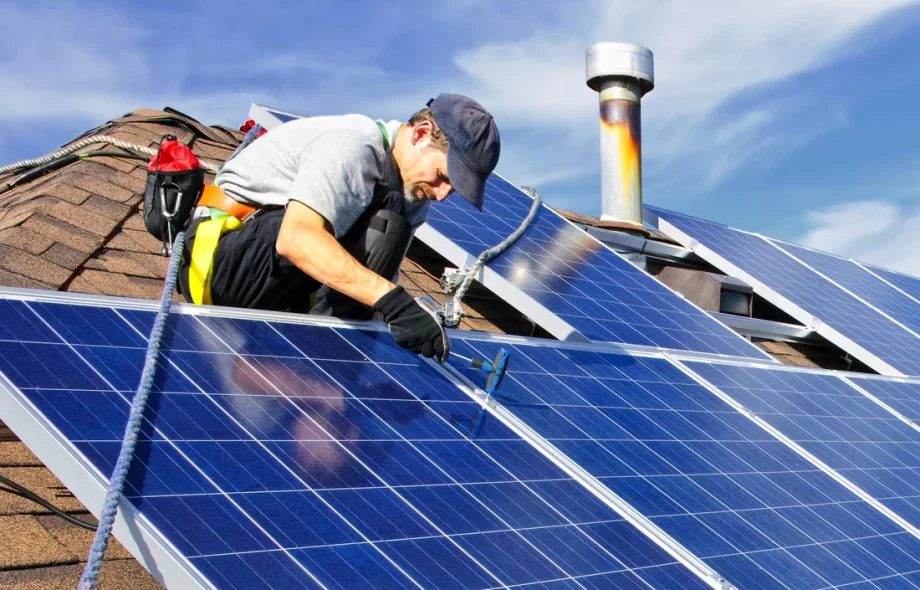Solar Installation: The Smart Way to Power Your Home
Energy costs are rising, and many homeowners are looking for reliable ways to cut expenses. One of the best solutions is solar installation. By switching to solar power, you can reduce your electricity bills, increase energy independence, and lower your carbon footprint.
Solar panels capture sunlight and convert it into electricity, making them a practical and eco-friendly energy source. The process of installing solar panels may seem complex, but with the right information, it becomes much easier to understand.
In this blog, we’ll discuss the benefits of solar power, the installation process, costs, and important factors to consider before making the switch.
Why Solar Installation is a Smart Investment
Lower Energy Bills
Electricity costs are unpredictable. Switching to solar power allows you to generate your electricity and reduce your reliance on the grid. This leads to significant savings, especially in areas with high energy rates. Some homeowners even generate excess power and receive credits through net metering programs.
Environmental Benefits
Traditional power sources rely on fossil fuels, which contribute to pollution. Solar panels use sunlight, a renewable and clean energy source. By installing solar panels, you help reduce greenhouse gas emissions and promote a healthier planet.
Energy Independence
Relying on traditional electricity means you are subject to utility price increases. Solar panels provide energy independence, allowing you to control your power production and consumption. Adding a battery storage system lets you store excess energy for use during outages or nighttime hours.
Increase in Property Value
Homes with solar panels often have higher property values. Buyers are willing to pay more for a house with lower utility costs and sustainable energy solutions. A solar system is a long-term investment that adds both financial and functional value to your home.
How Solar Installation Works
Step 1: Site Assessment
Before installing solar panels, a professional will inspect your roof to determine if it is suitable. Factors such as roof condition, shading, and angle play a role in system efficiency. If your roof is not ideal, ground-mounted systems are an alternative.
Step 2: Choosing the Right System
Solar panel systems vary in size and efficiency. Your energy needs, roof space, and budget will determine the best system for you. Monocrystalline, polycrystalline, and thin-film panels each have different performance levels and costs.
Step 3: Obtaining Permits and Approvals
Installing solar panels requires permits from local authorities. These approvals ensure the system meets building and electrical codes. A professional solar provider will handle the paperwork to streamline the process.
Step 4: Installing the Solar Panels
Once permits are secured, the installation begins. Panels are mounted on the roof or ground and connected to an inverter. The inverter converts solar energy into usable electricity for your home. The entire process typically takes one to three days.
Step 5: Connecting to the Grid
After installation, your system must pass an inspection before being connected to the grid. Once approved, you can start generating and using solar power. Many utility companies offer net metering, allowing you to earn credits for excess energy sent to the grid.
Cost of Solar Installation
Factors That Affect Pricing
Several factors determine the cost of a solar installation, including:
- System Size: Larger systems generate more power but cost more upfront.
- Panel Type: High-efficiency panels are more expensive but provide better performance.
- Roof Condition: If repairs or reinforcements are needed, installation costs will increase.
- Location: Sunlight availability and local regulations affect system design and pricing.
Financial Incentives and Rebates
Many governments offer incentives to make solar power more affordable. Tax credits, rebates, and grants can lower the overall cost of installation. Check with local energy programs to see what benefits are available in your area.
Return on Investment
Solar panels typically pay for themselves within 5 to 10 years. With reduced electricity bills and potential incentives, homeowners see long-term financial gains. A well-maintained system can last 25 years or more, making it a worthwhile investment.
Choosing the Right Solar Installer
Experience and Certification
Choose a company with proven expertise in solar installation. Look for certifications such as NABCEP (North American Board of Certified Energy Practitioners) to ensure quality service.
Customer Reviews and Reputation
Online reviews and testimonials provide insight into a company’s reliability. A strong reputation indicates customer satisfaction and successful installations.
Warranty and Maintenance Services
A reputable installer offers warranties on panels, inverters, and labor. Maintenance services keep your system running efficiently for years.
Financing Options
Some companies offer financing plans, including solar loans and leases. Compare options to find the best deal for your budget and energy needs.
Common Myths About Solar Installation
Myth 1: Solar Panels Don’t Work in Cloudy Weather
Solar panels still generate electricity on cloudy days. While output is lower compared to sunny days, they continue producing power.
Myth 2: Solar Panels Are Too Expensive
While the initial cost can be high, incentives and long-term savings make solar power affordable. Many homeowners break even within a few years.
Myth 3: Solar Panels Require Constant Maintenance
Solar panels are durable and require minimal upkeep. Occasional cleaning and routine inspections keep them performing efficiently.
Final Thoughts
Switching to solar power is a smart decision for homeowners looking to reduce energy costs, increase property value, and support the environment. The Solar Power installation process is straightforward, and financial incentives make it more accessible than ever. Choosing a reliable installer ensures a smooth transition to renewable energy.
Thinking about making the switch to solar power? Contact a trusted solar installation provider today. Start saving money and enjoy clean, renewable energy for years to come!
 :
https://www.pinterest.com/insidetechieblog/
:
https://www.pinterest.com/insidetechieblog/












